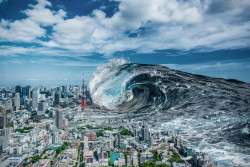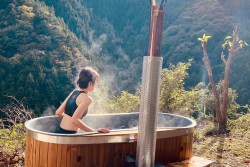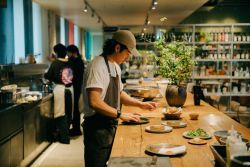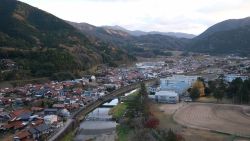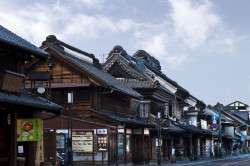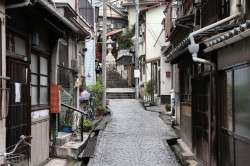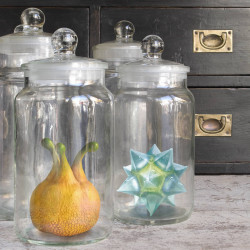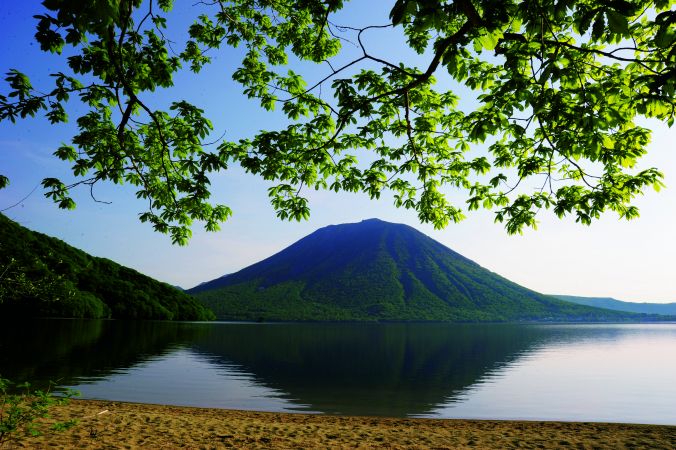
From shimmering lakes and snowcapped mountains to World Heritage shrines, temples and rejuvenating hot springs, it’s no secret why Nikko has drawn visitors for centuries. Here’s why it should be your next adventure (and why you should probably go twice or more).
ABOUT NIKKO
Nestled among the mountains almost directly north of Tokyo, Nikko has long captivated hearts and minds with scenery so achingly beautiful that it appeals to a sense of otherworldliness. The view of the near 100-meter-high Kegon Falls tumbling from Lake Chuzenji at the foot of Mount Nantai seems almost too fantastical to be believed. In fact, it was an eruption of Nantai 20,000 years ago that blocked the valley, leading to the creation of Lake Chuzenji, proving that nature really does sometimes rival imagination.
The near-mystic quality of the landscape may explain the area’s long history of drawing Buddhist and Shinto practitioners. It gained extra significance in 1617 when Nikko Toshogu shrine was completed. It was to be the final resting place for Tokugawa Ieyasu, the founder and first shogun of the Tokugawa shogunate of Japan. This subsequently attracted many visitors during the Edo period (1603 – 1868) and thereafter.
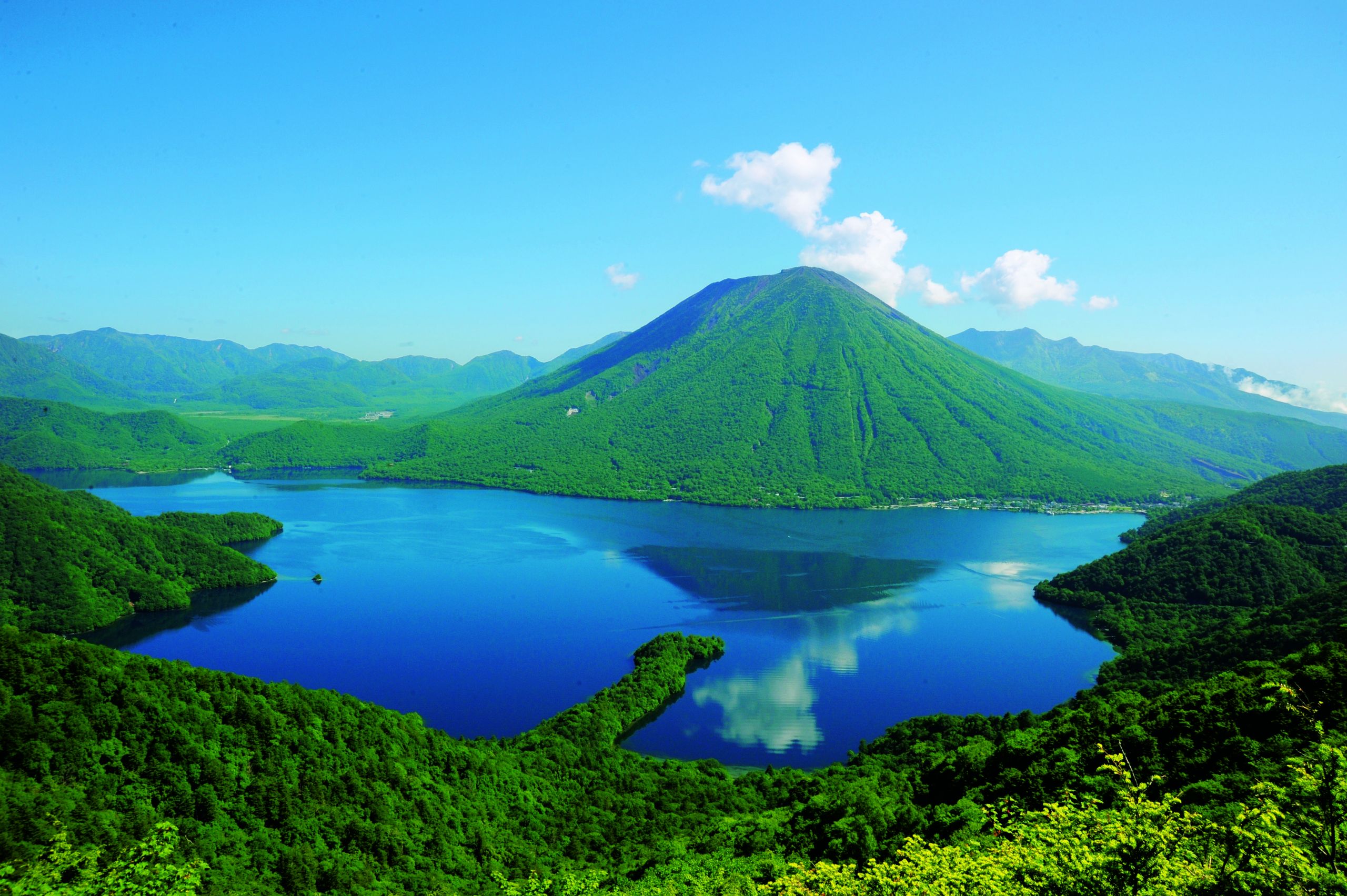
The rich blend of culture, history and nature has catapulted Nikko into one of Japan’s top destinations that warrant leisurely exploration. Begin your journey at Tobu-Nikko Station at the border of the Nikko National Park. From there, stroll up the high street lined with stores selling traditional crafts and local sweets until you reach the UNESCO World Heritage shrines and temples tucked among the trees.
From there, your adventure has just begun. To truly appreciate the scale of Nikko’s natural beauty, ride the Tobu bus up the zig-zagging Iroha Slopes over to Okunikko (literally “Inner Nikko”). Famed for its fall foliage, the scenery is spectacular in any season, with the area burst- ing into pinks and whites when the cherry blossoms bloom in the spring. Whether you go for a gentle stroll, hike a summit, splash out onto the lake or relax in a hot spring, take your time to appreciate all this place has to offer.
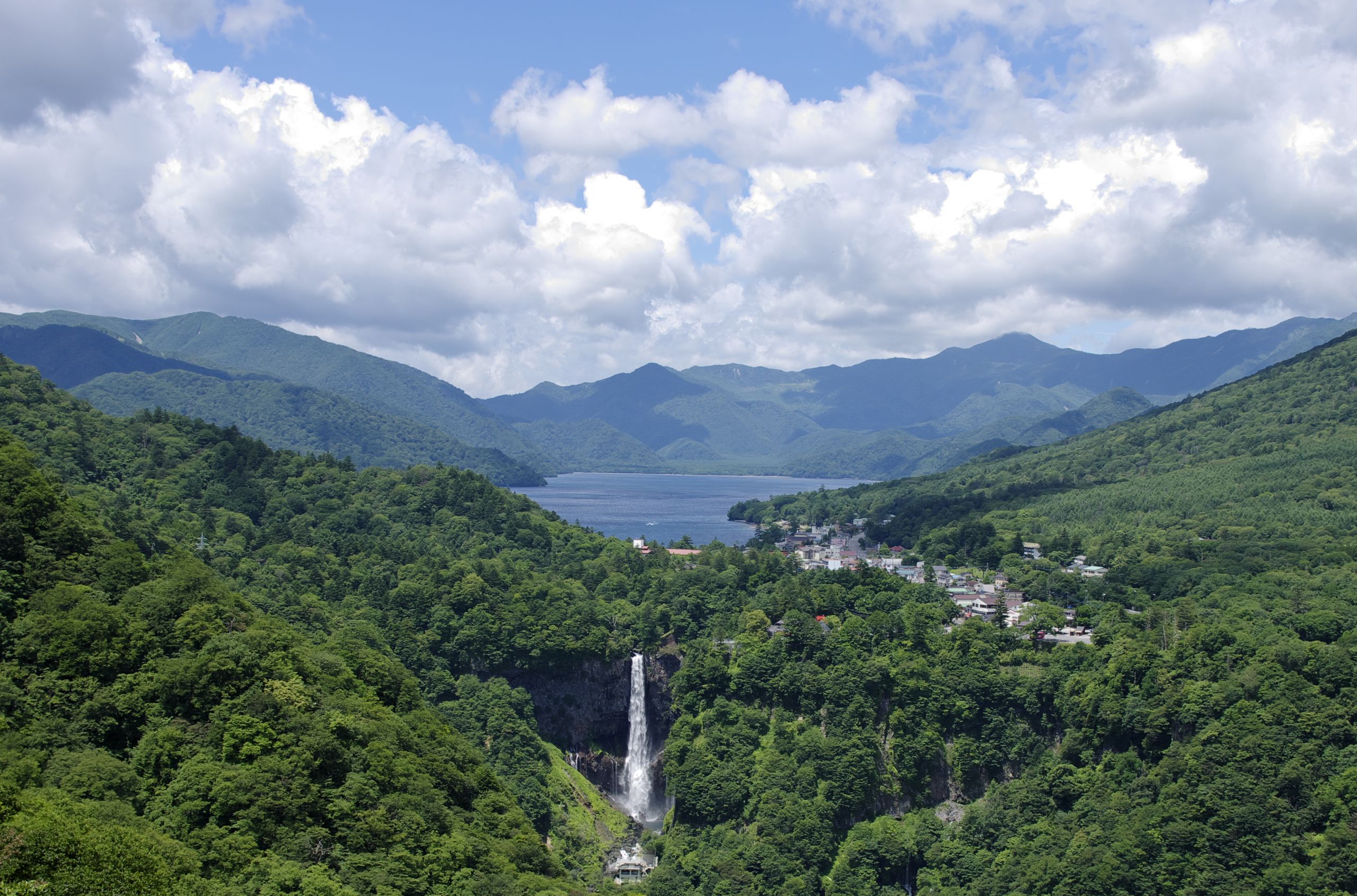
WALKS & HIKES
Lakes, valleys and stratovolcanoes: The diverse geological landscape of Okunikko not only provides mesmerizing views but also provides a range of different walks and hikes to suit all abilities, whether you are looking for a family outing or training for your next triathlon.
Senjogahara Moor Nature Research Trail
Beginner | Distance 6.3km | Time 2 hrs. 20 min.
Get off the bus at Yutaki Iriguchi at the southern tip of Lake Yunoko. This is a walk framed by waterfalls, beginning at the beautiful Yudaki Falls and ending at the equally striking Ryuzu Falls. Much of the trail is smooth and flat, with several boardwalks, allowing for a relaxing stroll with great views over the Senjogahara Moors surrounded by mountains. It’s popular with birdwatchers, and you can also see many wetland plants and flowers. One particularly charming spot is Odashiro Bridge, a wooden walkway over the Yugawa River, where fallen moss-covered trees conjure the image of a jungle, especially in the green summer months.
Lake Kirikomi & Lake Karikomi Trail
Moderate | Distance 9.6km | Time 4 hrs. 15 min.
Begin at Yumoto Onsen, renowned for centuries for its hot springs, and pass by Onsen-ji, where you can also take a bath.From here, it’s a long climb up to Kotoge Pass, which will reward you with views over Lake Yunoko. Continue on and you’ll come to Lake Kirikomi – flaming orange in fall – and eventually to Karenuma Pond, which is a dry lake surrounded by grasslands and mountains. Then it’s a long descent down to Kotoku Onsen and past Kotoku Farm, where cows and horses graze in rolling green pastures (don’t miss the rich milk ice cream). A note of caution: buses back from Kotoku Iriguchi and Kotoku Onsen are infrequent so check the schedule carefully.
Mount Nantai Climbing Trail
Advanced | Ascent 3 hrs. 30 min. | Descent 2 hrs. 35 min.
For keen hikers who want to tackle mountain terrain, Mount Nantai – designated as one of Japan’s 100 famous mountains – is a must. After all, it’s only fitting to pay one’s respect to the stratovolcano that created Lake Chuzenji in the first place. The mountain is open five and a half months of the year, with an opening ceremony on May 5 and closing ceremony on October 25. Before setting off, you will need to register and pay an entrance fee of ¥1,000 at Futarasan-jinja’s Chuguji Shrine. The route involves a challenging 1,200 meters of climbing to reach the summit, and there are a few mountain huts and basic facilities along the way.
NIKKO CULTURE

Temples
Beyond the UNESCO World Heritage Area, Okunikko has plenty more temples to be dis- covered. Chuzen-ji houses the Tachiki Kan- non, a six-meter-tall statue of the Buddhist Goddess of Mercy with 1,000 arms. Follow the wooden walkway up to the colorful second story. Be sure to look up, as the ceiling is decorated with a mesmerizing white dragon by Nanpu Katayama. Other panels are filled with nearly 150 colorful depictions of flower varieties found in the Nikko area. Another temple worth noting is Onsen-ji, which is an extremely rare example of a temple with a hot spring. Visitors can take a bath in its cloudy waters, which are said to promote health and longevity, then enjoy tea and a traditional snack afterwards.
Nikkobori Woodcarving
Stroll a short way uphill from Tobu- Nikko Station and your eye will land upon several stores with intricately carved wooden items, from mirrors and plates to ornate cabinets. Nikkobori – literally “Nikko wood- carving” – dates from the Edo period and is believed to have originated from restoration work conducted on Toshogu Shrine. Skilled artisans use a special flat-tipped gouge called a “hikkaki” or “hikkaki-tou.”
You can also have a go at the Nikko Woodcarving Village Craft Center, where you can choose between five different designs, including a tray, hand mirror and confectionery box. The experience takes roughly one hour and 20 minutes and can be undertaken on the day, although reservations are required for groups of five and above
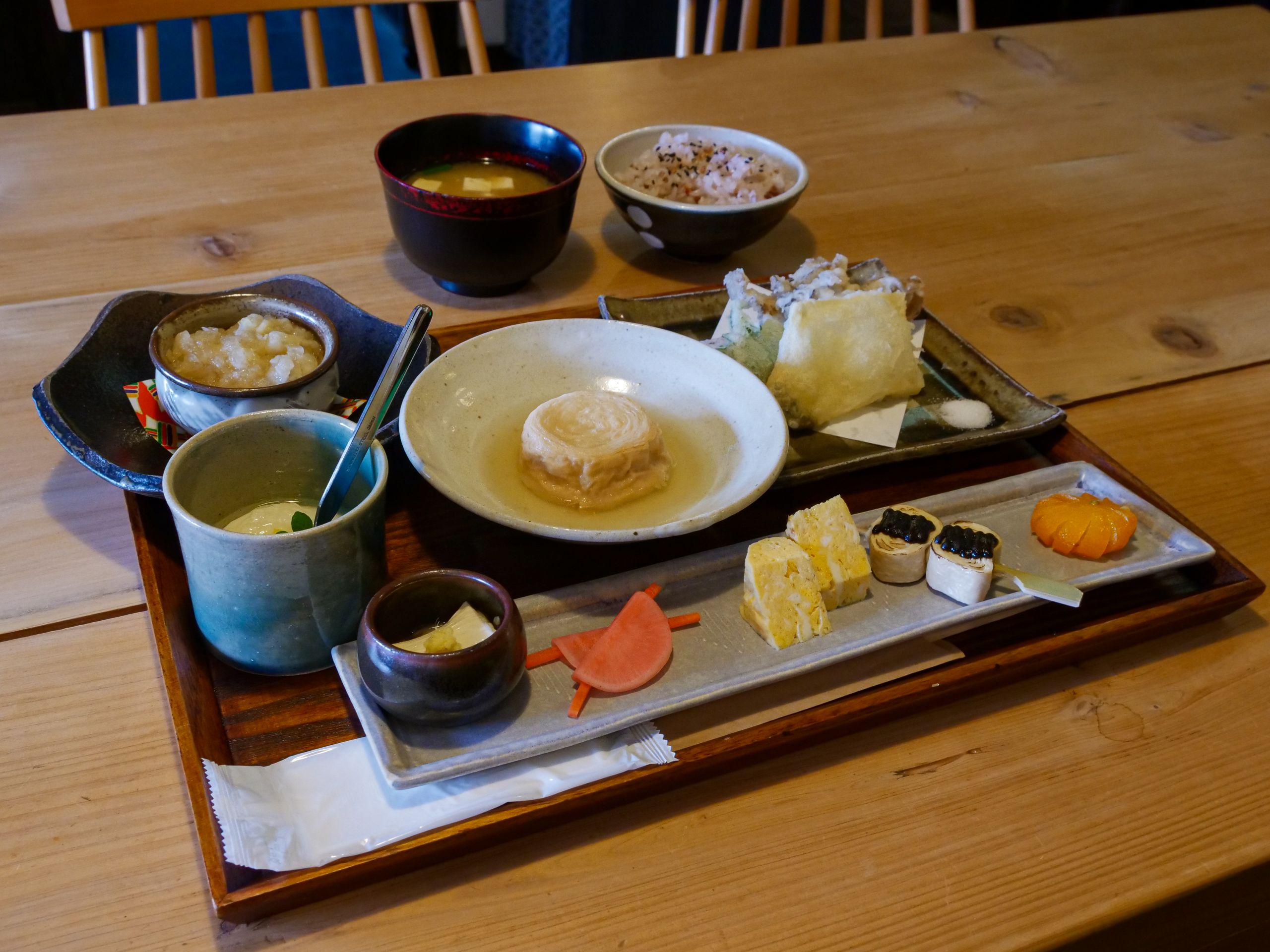
Yuba
The delicacy and versatility of this local specialty should not be underestimated. Yuba is essentially tofu skin—a film made by boiling up soy milk in an open pan that is then collected and dried to form yellowish sheets. It is said to
have a long history in the area due to the vegetarian diets of the Buddhist monks and priests who lived and worshipped at the many temples. Yuba restaurants are everywhere—look for ゆば or 湯波 on the sign—but one excellent place to try it is Nagomi Chaya, a short distance from Shinkyo Bridge.
Lunch comes as one set with yuba incorporated into an array of different dishes in creative ways. What’s more, the cozy interior has both Western-style tables and tatami floor seating so you can choose whichever suits your mood.

History with an international twist
The higher elevation of Okunikko provides some relief from the summer heat, so it’s not hard to see why Lake Chuzenji became an international summer resort from the late 1800s onwards. A short scenic walk along Lake Chuzenji’s eastern shore will take you to the British Embassy Villa Memorial Park. Built in 1896 as the private villa of British diplomat Ernest Satow, there is now an exhibition about Satow’s life and his significant influence on the Meiji restoration, as well as English tea room (more scones anyone?). Almost next door is the Italian Embassy Villa Memorial Park, which also boasts great views of the lake. It was built as a summer house for the Italian ambassador in 1928 and used by successive ambassadors until 1997. The faithfully reconstructed interior uses local Nikko cedar in a striking chequered design. The second floor hosts an exhibition on the history of international resorts in the area.
EXPERIENCE

Travel: Ropeway & cruise
There is nothing quite like getting out on the water. The Tobu Chuzenjiko Cruise departs several times a day, offering various courses including a 55-minute round trip which stops near major attractions. It operates from April 20th to the end of November. For an aerial perspective, take the Akechidaira Ropeway up to the observation deck for breathtaking views. This fantastic experience is free with the Nikko Discount Ticket.

Adventure
For those with some energy to burn, there are several water activities to appeal to your adventurous spirit. Sup!Sup! offers standup paddleboarding on Lake Chuzenji, whether you’re a beginner or more experienced. You can take a tour and view the foreign embassy vil- las or even request a customized tour. Tochigi Kayak Center offers kayak picnicking experiences and tours on the lake, departing from Chuzenji Kanaya Hotel.
Relax: Hot springs
Nikko has long been popular for its onsen (hot springs), particularly those in the town of Yumoto Onsen on Lake Yuno. Sulfur springs well up at temperatures between 49.3 to 78.9 degrees Celsius (120.74 to 174.02 Fahrenheit), emerald green at the source, turning milky white on contact with air. Another great place to enjoy onsen is Chuzenji Kanaya Hotel on the shore of Lake Chuzenji. It boasts both indoor and outdoor baths, which are available to non-guests between 1pm and 3pm. To refuel after relaxing, the main dining room offers Western-style Japanese cuisine with a view out over the water, and there’s even an on-site bakery for freshly baked bread.
NIKKO DISCOUNT TICKET
Exclusively for overseas passport holders, the Nikko Discount Ticket is excellent value (adults ¥3,800, children ¥980), and makes travel around Nikko straightforward and simple. Valid for one to four consecutive days, it includes one round trip from Asakusa, 20 percent off limited express and compartment room fares, plus free rides on all Tobu bus lines in Nikko, as well as the Akechidaira Ropeway.
For more information on Nikko, please go to: www.tobu.co.jp/en/sightseeing/nikko_kinugawa
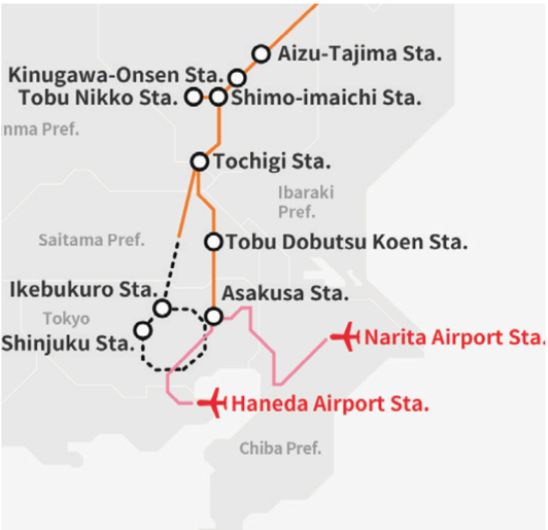
Access from Tokyo
Head to Asakusa Station in the east of Tokyo and hop on the Tobu line to Tobu-Nikko. The trip takes about one hour and 40 minutes on the direct limited express, or around three hours changing between local and express trains.
Coronavirus infection prevention measures
Tobu Railway has taken several precautions to ensure travel with peace of mind. Carriages are regularly sterilized and ventilated, and the limited express also has reservable private compartments.
For more information on Nikko, please go to:
www.tobu.co.jp/

